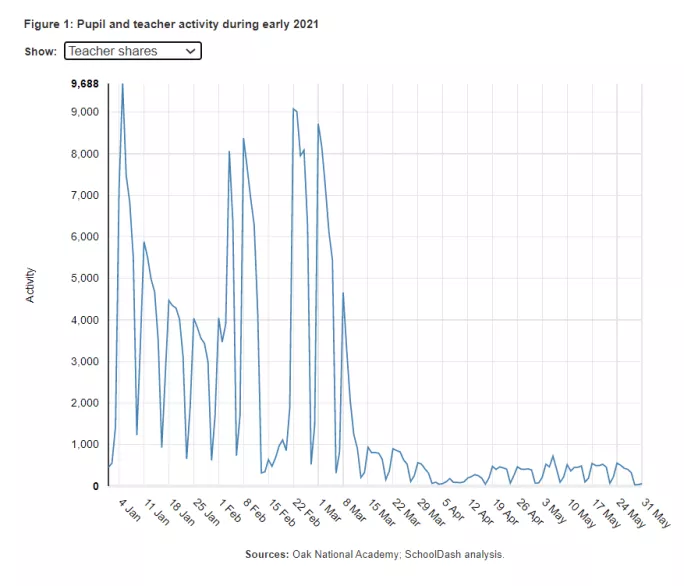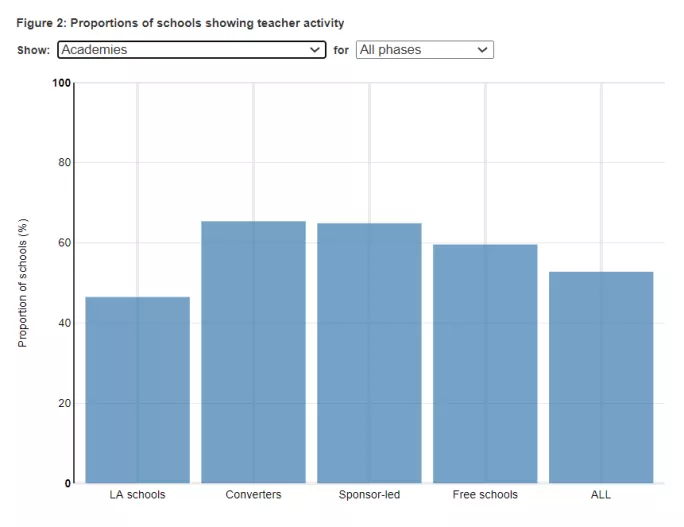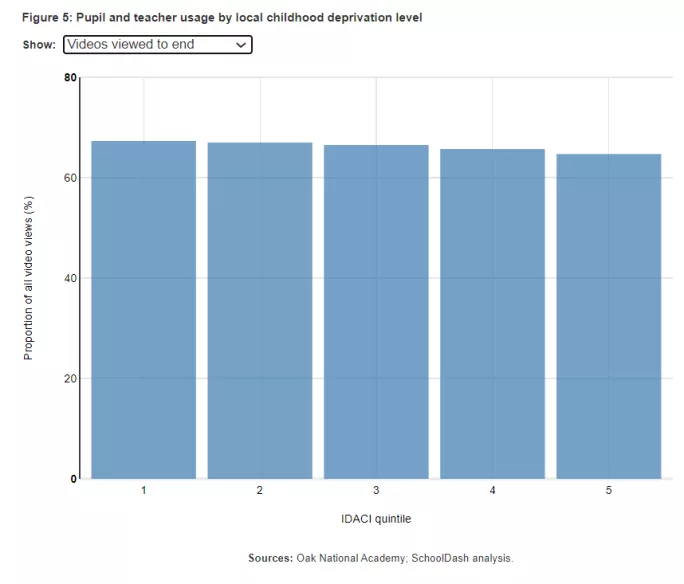
- Home
- Teaching & Learning
- General
- Covid: How remote learning changed during pandemic
Covid: How remote learning changed during pandemic

The way that teaching and learning patterns have shifted over the course of the Covid pandemic has been revealed by new analysis of Oak National Academy data by researchers at SchoolDash.
In September, Oak National’s research revealed that deprivation levels had affected the online classroom’s impact, as in the most deprived IDACI (Income Deprivation Affecting Children Index) areas, only 69.4 per cent accessed lessons by a computer, whereas 78 per cent in the top quintile did.
Online learning: Six findings from Oak National Academy
Disruption: Use of remote Oak National Academy lessons soars by up to 249 per cent
Covid: Schools told to plan for more remote learning
SchoolDash has now looked into how the Oak National Academy online classroom was used by pupils and teachers over the course of the pandemic.
Oak National Academy: Key findings about online learning during Covid
Here are the key findings:
1. Use of Oak National declined during the second lockdown
SchoolDash data shows that the number of lesson starts for pupils declined from a maximum of nearly 3.6 million a day in early January to just under 1.4 million at the beginning of March, with a temporary dip during the half-term holiday in mid-February.
“Following the reopening of schools in early March, activity inevitably falls to much lower levels, with weekly peaks in the 50,000-100,000 lessons-a-day range,” it says.

2. Teacher use shows a different pattern
But for teachers, there are peaks in “shares” at the start and end of each half-term, while teachers’ downloads declined less as schools reopened.

3. Oak was used more by academies
Across all schools, 53 per cent used Oak National but more secondary schools used the online classroom than primary schools, with 49 per cent of primaries using Oak compared with 74 per cent of secondaries.
“This may be in part because secondary schools found Oak resources more relevant, but is also a consequence of them being much bigger, so the probability of at least one teacher at each school having used Oak is correspondingly higher,” SchoolDash said.
Use in secondary schools varied by school type. Schools in areas of deprivation were more likely to use Oak but usage was also higher in academies and faith schools.

4. Pupils in poorer areas were less likely to finish a lesson
SchoolDash finds that poorer areas saw higher levels of activity in terms of teacher downloads or shares and pupil lesson starts.
“Notwithstanding the findings about school coverage described above, this suggests that schools and pupils in poorer areas made disproportionately heavy use of Oak resources,” SchoolDash says.
But pupils in the poorest IDACI quintiles were less likely to view a video all the way to the end.

Matt Hood, Oak National’s principal, has said that “pupils in the most deprived areas are more likely to be accessing on a mobile device, and so when we’re having this national conversation about getting devices to pupils, the thing that we tried to keep hammering home is not all devices are equal”.
5. Teachers used Google Classroom more than Teams
“Across England, Google Classroom was the most popular choice, overwhelmingly so in London and the South. Only in the East Midlands did Microsoft trump them,” says SchoolDash.
Commenting on the findings that Oak was used more by state schools than private schools, Timo Hannay, SchoolDash founder, said: “State schools certainly welcomed the provision of learning resources that are free at the point of use.
“For independent schools, the benefit of using free resources is more ambiguous because they need to justify their own fees, and, compared to this, any money saved is relatively modest.
“It’s also possible that Oak resources are better tailored to state schools, especially compared to independent schools that follow a less conventional curriculum, such as the IB.”
Commenting on the overall findings, Mr Hood said: “We’re delighted that Oak National Academy is widely used and valued by all types of state schools, across all stages of education.
“Pupils from key stages 2 and 3 take part in the highest number of our lessons. Teachers from over three-quarters of state secondary schools, and over half of state primary schools, have shared or downloaded our resources to help with planning and lesson delivery.
“Our use reflects the nature of the school system, with three in four secondary schools now being academies. We’re particularly proud that we are providing most support to, and are most used by, pupils and teachers in areas of higher deprivation (as measured by IDACI).
“Oak has been an incredible grassroots effort, with teachers from all school types from right across the country helping to create this valuable national resource.”
You need a Tes subscription to read this article
Subscribe now to read this article and get other subscriber-only content:
- Unlimited access to all Tes magazine content
- Exclusive subscriber-only stories
- Award-winning email newsletters
- Unlimited access to all Tes magazine content
- Exclusive subscriber-only stories
- Award-winning email newsletters
You need a subscription to read this article
Subscribe now to read this article and get other subscriber-only content, including:
- Unlimited access to all Tes magazine content
- Exclusive subscriber-only stories
- Award-winning email newsletters
- Unlimited access to all Tes magazine content
- Exclusive subscriber-only stories
- Award-winning email newsletters
topics in this article



